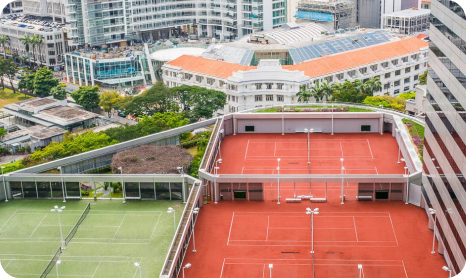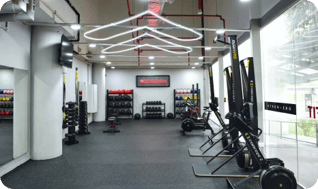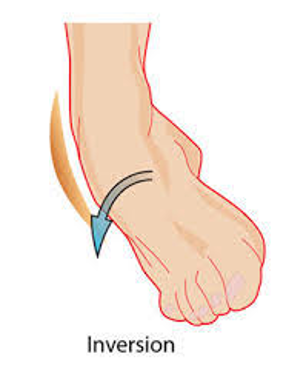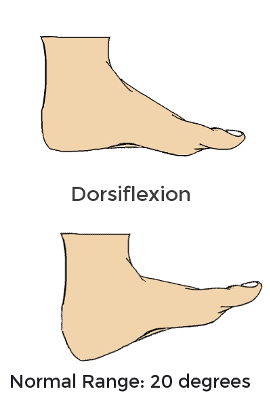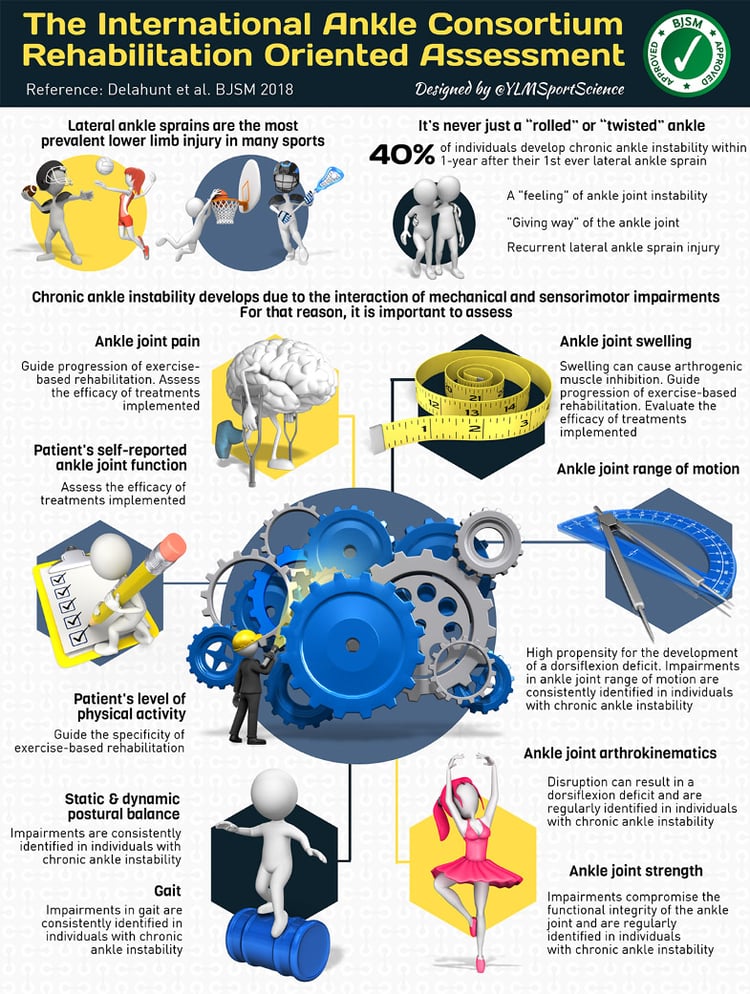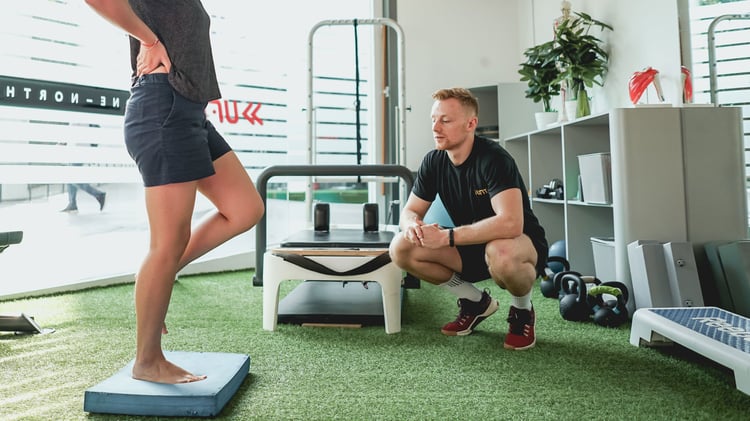Commonly described as a “twisted” or “rolled” ankle, an ankle sprain is an acute injury sustained to the lateral ligaments on the outside of the ankle. While lateral ankle sprains are most common, it is possible to sprain the medial ligaments or inner part of your ankle, but these are much less frequent.
While lateral ankle sprains are most common, it is possible to sprain the medial ligaments or inner part of your ankle, but these are much less frequent.
What is an Ankle Sprain?
A lateral ankle sprain is a very commonly sustained injury in the general population, and also among sportspeople. It is estimated that 40% of lateral ankle sprains occur during sports, while up to 70% of the general population report sustaining an ankle sprain at some point in time2. Despite this very high incidence, only 50% of people seek medical treatment after sustaining a lateral ankle sprain1. A large proportion of people who sustain an ankle sprain will go on to develop chronic ankle instability (CAI). Chronic ankle instability is defined as pain, swelling, and/or giving way along with recurrent sprains for a minimum of 12 months1.
How and Why do Ankle Sprains Occur?
In most instances, lateral ankle sprains occur after sudden inversion of the ankle joint (pictured below)2. As stated above, they can occur while playing sports and they can also occur during our daily life. Examples of these may be missing a step or coming off an unexpected curb.
If you are someone who has sustained ankle sprains in the past or are looking to prevent ankle sprains in the future, understanding the various risk factors which may lead to an ankle sprain are essential. These risk factors include1,2:
- Previous ankle sprain(s)
- Limited ankle range of motion, particularly dorsiflexion
- Reduced balance and proprioception
- Reduced ankle and calf strength
- Reduced cardio-respiratory endurance
- Low BMI (Body Mass Index)
- Your chosen sport
- Insufficient rehabilitation
Intervention - How seeing a Physiotherapist helps
Early assessment by a trained medical professional such as a physiotherapist is recommended. This is to rule out any other potential injuries such as ankle fractures. Adequate assessment and treatment are vitally important and can prevent the development of long-term ankle issues. Your physiotherapist will complete a thorough assessment, and if necessary, refer on for further medical assessment where necessary.
The essential components of a detailed physiotherapy assessment will be undertaken post ankle sprain. These include:
- Ankle pain
- Ankle joint swelling
- Self-reported ankle function score
- Active ankle range of motion
- Level of physical activity
- Ankle joint arthrokinematics, which refers to the movement of the ankle joint surfaces
- Ankle joint strength
- Static and dynamic balance
- Walking, or gait, pattern
The management and treatment of an ankle sprain are especially important in the early phases after an acute sprain. RICE (Rest, Ice, Compression, Elevation), should be utilized as early as possible but must be accompanied by additional interventions1. It is not recommended that the ankle be immobilized in the early stages post ankle sprain unless absolutely necessary. Starting exercise therapy early is associated with better outcomes, and functional ankle support may also be used1.
Prevention - How to Prevent Recurrence of Ankle Sprain
On-going exercise therapy remains the best option to prevent future ankle sprains. Incorporating ankle rehabilitation exercises into your current training program as much as possible can be extremely beneficial. Ankle taping and bracing may also prevent future ankle sprains, however, these are unlikely to be a long-term solution1.
Role of Physiotherapist in Ankle Sprain Rehabilitation
Physiotherapy is an integral, essential component of rehabilitation post-ankle sprain. Research has shown that early intervention can help reduce the risk of re-injury, while supervised physiotherapy can lead to faster recovery times, faster return to work and sport along improved strength and proprioception1.
Your rehabilitation program will consist of proprioceptive and balance exercises (static and dynamic), strength training, and ankle range of motion exercises. Manual therapy will also likely be utilized alongside an individualized home exercise program. A combination of all these treatment options will set you on the right path to returning to normal day-to-day function, or to get you back on the playing field as soon as possible.
Your Recovery
Ankle sprains are an extremely common injury that, if left untreated, can cause long-term problems for individuals. If you happen to sustain an ankle injury, it is important that you see a physiotherapist for early assessment, and to start a rehabilitation program. This will start you on the path to recovery and plays a crucial role in preventing ankle sprains from occurring again in the future.


.png?width=301&height=187&name=Website%20Navigation%20Images%20(3).png)

-1.jpg?width=1984&height=1196&name=UFIT%20Club%20Street%20Front%20(4)-1.jpg)

